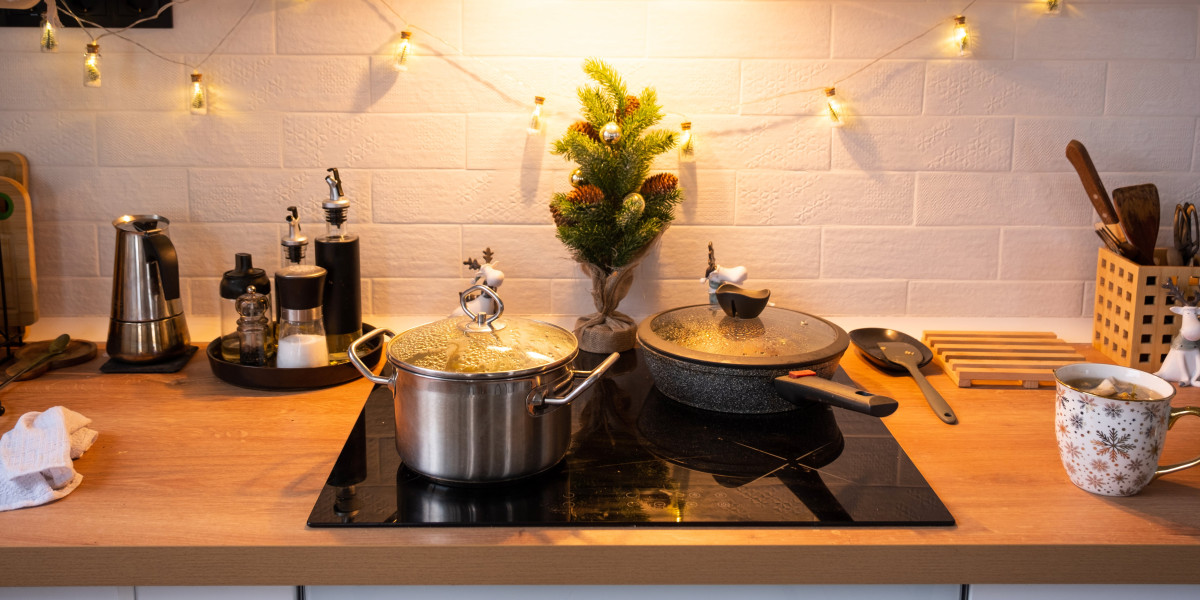The Comprehensive Guide to Built-In Cookers and Hobs
Built-in cookers and hobs have actually ended up being progressively popular in contemporary kitchen areas, offering both functionality and aesthetic appeal. These integrated appliances, created to fit effortlessly into kitchen cabinets, make the most of space while boosting the cooking experience. This short article will explore the different kinds of built-in cookers and hobs, their advantages, maintenance ideas, and often asked questions.

Comprehending Built-In Cookers and Hobs
Built-in cookers typically consist of ovens, while hobs refer to the cooking surface that can include numerous heating elements such as burner, electric coils, or induction zones. When integrated, these two appliances create an effective and structured cooking setup.
Types of Built-In Cookers and Hobs
When selecting a built-in cooker and hob, it's necessary to understand the various types available. Here's a detailed table comparing the primary types:
| Type | Description | Pros | Cons |
|---|---|---|---|
| Gas Hob | Uses gas as a fuel source. | Quick heat modification, culinary control. | Needs gas line setup. |
| Electric Hob | Uses electric coils or solid plate heating. | Generally more economical, simple to tidy. | Slower to heat and cool off. |
| Induction Hob | Utilizes electromagnetic energy for cooking. | Fast heating, energy-efficient, safe. | Costly, needs suitable cookware. |
| Built-In Oven | Can be electric, gas, or mix. | Versatile cooking choices, numerous sizes. | Fixed place, prospective installation complexity. |
Benefits of Built-In Cookers and Hobs
Space-Saving Design: Built-in units conserve space by incorporating seamlessly into the kitchen layout, leaving more space for storage and counter tops.
Aesthetic Appeal: They provide a smooth and contemporary appearance, raising the style of any kitchen.
Customization: With many styles and configurations, homeowners can choose appliances that best fit their cooking practices and kitchen dimensions.
Enhanced Functionality: built in range-in cookers often come with innovative features such as self-cleaning choices, numerous cooking modes, and programmable timers.
Safety Features: Modern hobs integrate features like automated shut-off and child locks, improving security in the kitchen.
Upkeep Tips for Built-In Cookers and Hobs
To guarantee the durability and ideal efficiency of Hisense Extra Large Built-In Electric Double Oven cookers and hobs, appropriate maintenance is vital. Below are crucial maintenance suggestions:
Regular Cleaning: Wipe spills and stains immediately to prevent them from hardening or ending up being harder to clean up.
Usage Appropriate Cleaning Supplies: Avoid abrasive materials that can scratch surfaces. Use cleaner particularly designed for the type of appliance you have.
Check Gas and Electrical Connections: Regular inspections can prevent leakages and ensure optimal efficiency.
Calibrate Temperature Settings: If you notice disparities in cooking temperature levels, think about recalibrating the oven.
Set Up Professional Servicing: Annual check-ups can help determine and rectify minor issues before they escalate.
Picking the Right Built-In Cooker and Hob
When picking a built-in cooker and hob, several aspects need to be considered:
1. Cooking Preferences:
- If you take pleasure in fast temperature changes, a gas hob might be perfect.
- For energy efficiency and consistent cooking, induction hobs are chosen.
2. Kitchen Size:
- Consider the space offered for installation. Procedure cabinets and other appliances to ensure the picked system fits comfortably.
3. Design and style:
- Opt for designs that complement your kitchen's design. Built-in units can be found in numerous surfaces, such as Indesit 60cm Stainless Steel Electric Oven - Affordable Quality steel, black, or custom-made cabinetry.
4. Budget:
- Establish a spending plan that factors in purchase costs, installation fees, and long-lasting business expenses.
5. Brand Reputation:
- Research reputable brands known for dependability and customer care. Reading reviews and seeking suggestions can also be helpful.
Frequently Asked Questions (FAQs)
Q1: Are built-in cookers and hobs more pricey than conventional units?A1: Generally, built-in cookers and hobs can be more pricey upfront due to installation and design. Nevertheless, they might use long-lasting savings through energy performance.
Q2: Can I set up a built-in cooker or hob myself?A2: While some may be installed by property owners, it is typically suggested to employ an expert, especially for gas or complex electrical connections, to ensure safety and compliance with local codes.
Q3: What is the typical lifespan of built-in cookers and hobs?A3: With proper care, built-in cookers and hobs can last anywhere from 10 to 15 years. Regular upkeep can extend their life.
Q4: Is it possible to integrate various kinds of hobs with the exact same oven?A4: Yes, numerous kitchens feature a combination of hobs (e.g., gas and induction) together with a built-in oven, permitting for versatile cooking alternatives.
Q5: How do I know if my hob is energy-efficient?A5: Look for energy effectiveness rankings and consider induction hobs, which normally provide remarkable energy efficiency compared to gas or traditional electric hobs.
Built-in cookers and hobs use a blend of modern-day style and advanced cooking innovation, improving any kitchen's functionality and design. By comprehending the different types readily available, their benefits, and maintenance needs, house owners can make informed decisions when buying these vital kitchen appliances. With proper choice and care, built-in cookers and hobs can offer years of satisfying cooking and a smooth kitchen experience.







